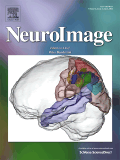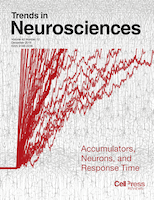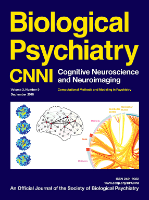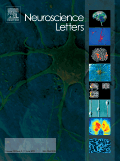
NEUROIMAGE
Scope & Guideline
Bridging Cognitive Neuroscience and Neurology through Imaging
Introduction
Aims and Scopes
- Neuroimaging Methodology:
The journal emphasizes the development and application of advanced neuroimaging techniques, including fMRI, PET, MEG, and EEG, to investigate brain function and structure. - Clinical Applications:
Research addressing the clinical implications of neuroimaging findings, particularly in understanding neurological and psychiatric disorders, is a core focus. - Cognitive Neuroscience:
The exploration of the neural basis of cognitive processes such as memory, attention, and emotion through neuroimaging studies is a significant area of interest. - Developmental and Aging Studies:
The journal covers research that examines neurodevelopmental changes across the lifespan, as well as age-related alterations in brain structure and function. - Interdisciplinary Approaches:
NEUROIMAGE encourages interdisciplinary research that combines neuroimaging with genetics, psychology, and computational modeling to enhance understanding of brain function. - Data Sharing and Open Science:
The journal promotes transparency and reproducibility in neuroimaging research by advocating for data sharing and the use of standardized methodologies.
Trending and Emerging
- Integration of AI and Machine Learning:
The application of artificial intelligence and machine learning techniques for analyzing neuroimaging data is rapidly growing, providing new insights and improving diagnostic capabilities. - Real-time Neuroimaging:
Research focusing on real-time neuroimaging techniques is on the rise, allowing for the investigation of dynamic brain processes and cognitive tasks as they occur. - Neurovascular Coupling Studies:
There is an increasing interest in understanding the relationship between neural activity and cerebrovascular function, highlighting the importance of neurovascular coupling in brain health. - Focus on Individual Differences:
Emerging studies are concentrating on individual variability in brain structure and function, particularly in relation to cognitive performance and psychiatric conditions. - Longitudinal Studies:
Longitudinal neuroimaging studies that track changes over time are gaining prominence, providing insights into developmental trajectories and the effects of interventions. - Translational Research:
There is a growing trend towards research that bridges basic neuroscience and clinical applications, emphasizing the importance of neuroimaging in understanding and treating neurological disorders.
Declining or Waning
- Basic Animal Studies:
Research primarily focused on basic neuroimaging studies in animal models has seen a decline, as there is a growing emphasis on human studies and translational research. - Single Modality Studies:
There is a noticeable reduction in studies that utilize only one imaging modality, as the trend shifts towards multi-modal approaches that provide a more comprehensive understanding of brain function. - Focus on Static Structural Imaging:
The focus on static structural imaging techniques, such as traditional MRI, is waning in favor of dynamic imaging methods that capture brain activity over time. - Research on Non-specific Cognitive Tasks:
Studies examining non-specific cognitive tasks without clear hypotheses or connections to broader cognitive theories are becoming less common, as the field moves towards more targeted investigations.
Similar Journals

TRENDS IN NEUROSCIENCES
Leading the Charge in Neuroscience InnovationTRENDS IN NEUROSCIENCES, published by CELL PRESS, is a leading journal in the field of neuroscience, offering cutting-edge insights and important developments in the rapidly evolving landscape of brain research. With an impressive Impact Factor and ranking in the top quartile (Q1) of the category for Neuroscience (miscellaneous), it is positioned as a vital resource for researchers and professionals seeking to stay abreast of the latest discoveries and trends from 1978 to the present. Specifically ranked #3 out of 113 in General Neuroscience by Scopus, this journal promotes the interdisciplinary exchange of ideas and knowledge, making it an essential platform for students and experienced scholars alike. Although it is not an Open Access journal, its value lies in its rigorous peer-review process and commitment to maintaining the highest standards of academic integrity. By continuing to explore the complexities of neural processes and behavior, TRENDS IN NEUROSCIENCES plays a crucial role in shaping the future of neuroscience research and education.

Frontiers in Neuroinformatics
Bridging Disciplines for a Deeper Understanding of the BrainFrontiers in Neuroinformatics is a prestigious open-access journal published by FRONTIERS MEDIA SA in Switzerland, dedicated to advancing the interdisciplinary field of neuroinformatics. Since its inception in 2007, the journal has played a crucial role in facilitating knowledge exchange among researchers and professionals, exploring the intersection of neuroscience, biomedical engineering, and computer science applications. With an impressive Q2 ranking in both Biomedical Engineering and Computer Science Applications, and a Q3 ranking in Neuroscience, the journal consistently showcases cutting-edge research and innovations that push the boundaries of our understanding of the brain and its computational models. Positioned prominently within the Scopus rankings, with a rank of #15/49 in Neuroscience (miscellaneous) and a 70th percentile standing, Frontiers in Neuroinformatics is essential reading for anyone engaged in this dynamic field. Researchers, students, and practitioners are encouraged to contribute to and leverage this accessible platform to foster collaboration and drive scientific progress.

Brain Connectivity
Exploring the Intricacies of Neural Networks.Brain Connectivity is a premier journal dedicated to advancing the understanding of neural connections and brain function through innovative research and interdisciplinary collaboration. Published by MARY ANN LIEBERT, INC, this journal has established itself in the field of neuroscience, earning a respectable Q2 ranking in the 2023 category of Neuroscience (Miscellaneous) and a Scopus rank of 61 out of 113 in General Neuroscience. Since its inception in 2011, Brain Connectivity has been at the forefront of research on the intricate web of brain networks, exploring topics such as functional connectivity, neuroimaging, and the implications of connectivity studies for understanding various neurological disorders. Researchers, professionals, and students benefit from comprehensive access to cutting-edge studies and critical reviews, fostering a deeper appreciation of brain dynamics. As the field evolves, Brain Connectivity remains a vital resource for those aiming to contribute to our growing understanding of brain architecture and function.

Biological Psychiatry-Cognitive Neuroscience and Neuroimaging
Exploring the Intersection of Mind and BrainBiological Psychiatry-Cognitive Neuroscience and Neuroimaging is a leading interdisciplinary journal published by Elsevier, focusing on the convergence of biological psychiatry, cognitive neuroscience, and advanced neuroimaging techniques. With its prestigious Q1 rankings across essential categories such as Biological Psychiatry, Cognitive Neuroscience, and Neurology (clinical), this journal is at the forefront of research that examines the complexities of mental health through innovative methodologies. Covering a broad spectrum of topics from neurobiological mechanisms to clinical applications, it aims to provide a platform for scholars and practitioners to exchange insights on mental disorders and their neurobiological underpinnings. The impact factor and Scopus rankings further underscore its importance, with rankings highlighting its position in the top percentiles of related disciplines. By fostering an open exchange of ideas and promoting cutting-edge research, this journal is an essential resource for researchers, professionals, and students dedicated to advancements in the understanding and treatment of psychiatric and neurological conditions.

Journal of Integrative Neuroscience
Pioneering Insights in Integrative NeuroscienceWelcome to the Journal of Integrative Neuroscience, a prominent platform dedicated to advancing the field of neuroscience by fostering interdisciplinary research and innovation. Published by IMR PRESS, this open-access journal has been committed to disseminating high-quality research since its inception in 2002, with a vision to integrate various aspects of neuroscience, from theoretical foundations to applied methodologies, ultimately enhancing our understanding of the brain and nervous system. With an evolving presence in the academic community, the journal holds significant rankings, such as Q2 in Medicine and Q3 in Neuroscience for 2023, reflecting its growing impact and value to researchers and professionals alike. The journal is accessible globally, having adopted an open-access model in 2018, ensuring that vital neuroscience findings reach a broader audience without barriers. Positioned in Singapore and serving an international readership, the Journal of Integrative Neuroscience is your essential resource for the latest insights and discoveries in a rapidly evolving field.

NeuroSci
Unlocking the Mysteries of the Brain, One Study at a TimeNeuroSci is an esteemed open-access journal published by MDPI, dedicated to advancing the field of neuroscience through high-quality research dissemination. Operating under the E-ISSN 2673-4087, this journal aims to foster collaboration and innovation by providing a platform for original research articles, reviews, and theoretical studies that address the complexities of the brain and nervous system. NeuroSci encourages submissions from a wide array of disciplines including cognitive neuroscience, neurobiology, neurophysiology, and neuropsychology, making it an essential resource for researchers, professionals, and students alike. With its commitment to open accessibility, NeuroSci ensures that groundbreaking findings are readily available to the global community, thereby enhancing the impact and exchange of knowledge in neuroscience. The journal is located at ST ALBAN-ANLAGE 66, CH-4052 BASEL, SWITZERLAND, contributing to the reputation of MDPI as a leading publisher in the academic landscape.

Brain Imaging and Behavior
Illuminating Connections: Unraveling Brain and BehaviorBrain Imaging and Behavior is a premier journal published by SPRINGER, dedicated to advancing the understanding of the relationship between brain function and behavior through innovative imaging techniques. Since its inception in 2007, the journal has provided a crucial platform for researchers and professionals in fields such as Behavioral Neuroscience, Cognitive Neuroscience, and Psychiatry and Mental Health. With an impressive ranking within the Q1 category in Radiology, Nuclear Medicine and Imaging and maintaining strong Q2 status in several other categories, the journal is positioned as a leading resource for groundbreaking research. The journal aims to disseminate high-quality studies that explore neurobiological underpinnings of behavior, utilizing cutting-edge imaging technologies. Although it is not an open-access journal, the visibility and impact of published works in Brain Imaging and Behavior continue to influence the scientific community significantly, underscoring the critical intersection between imaging science and neuroscience.

Network Neuroscience
Pioneering Research in the Realm of Network ScienceNetwork Neuroscience is a premier open-access journal published by MIT Press, focusing on the interdisciplinary nexus of neuroscience, applied mathematics, artificial intelligence, and computer science. Since its inception in 2017, the journal has established itself as a leading outlet for innovative research and cutting-edge methodologies, ensuring disseminated knowledge is freely accessible to all. With an impressive Q1 ranking in multiple categories including Applied Mathematics, Artificial Intelligence, Computer Science Applications, and Neuroscience, it serves as a vital platform for scholars, professionals, and students to explore the intricate networks that underpin cognitive processes and brain function. The journal is committed to advancing the understanding of complex neural mechanisms through interdisciplinary approaches and remains a crucial resource for anyone engaged in the burgeoning fields of network science and neuroscience research.

NEUROSCIENCE LETTERS
Exploring the Frontiers of Neuroscience Research.NEUROSCIENCE LETTERS is a distinguished journal published by ELSEVIER IRELAND LTD, focusing on disseminating impactful research across the field of neuroscience. With its ISSN 0304-3940 and E-ISSN 1872-7972, the journal serves as a vital platform for researchers, professionals, and students aiming to explore the complexities of nervous system function and related disorders. Since its inception in 1975, NEUROSCIENCE LETTERS has contributed significantly to the field, currently positioned in the Q3 category for Miscellaneous Neuroscience, with a respectable Scopus rank of 52/113, placing it in the 54th percentile among its peers. The journal is published in Ireland and offers a comprehensive repository of scientific insights, methodologies, and innovative findings that advance our understanding of neurological phenomena. While not an open-access journal, it remains an essential resource for the latest advances in neuroscience research and the academic community’s collective knowledge.

NEUROPSYCHOLOGY REVIEW
Fostering Interdisciplinary Dialogues in NeuropsychologyNEUROPSYCHOLOGY REVIEW is a prestigious journal published by Springer, dedicated to the exploration of cognitive processes and behavior through neurological and psychological perspectives. With its ISSN 1040-7308 and E-ISSN 1573-6660, this journal holds a distinguished position in Q1 of the Neuropsychology and Physiological Psychology category, ranking at #3 out of 76 with an impressive 96th percentile in Scopus. Since its inception in 1990, it has provided a critical platform for researchers, professionals, and students to disseminate and engage with comprehensive reviews and empirical research, promoting a deeper understanding of the interplay between neural mechanisms and psychological phenomena. Aimed at fostering interdisciplinary collaboration and advancement in the field, NEUROPSYCHOLOGY REVIEW invites contributions that push the boundaries of knowledge and stimulate ongoing debates in neuropsychology, making it an invaluable resource for anyone interested in the latest scientific advancements within this dynamic area.